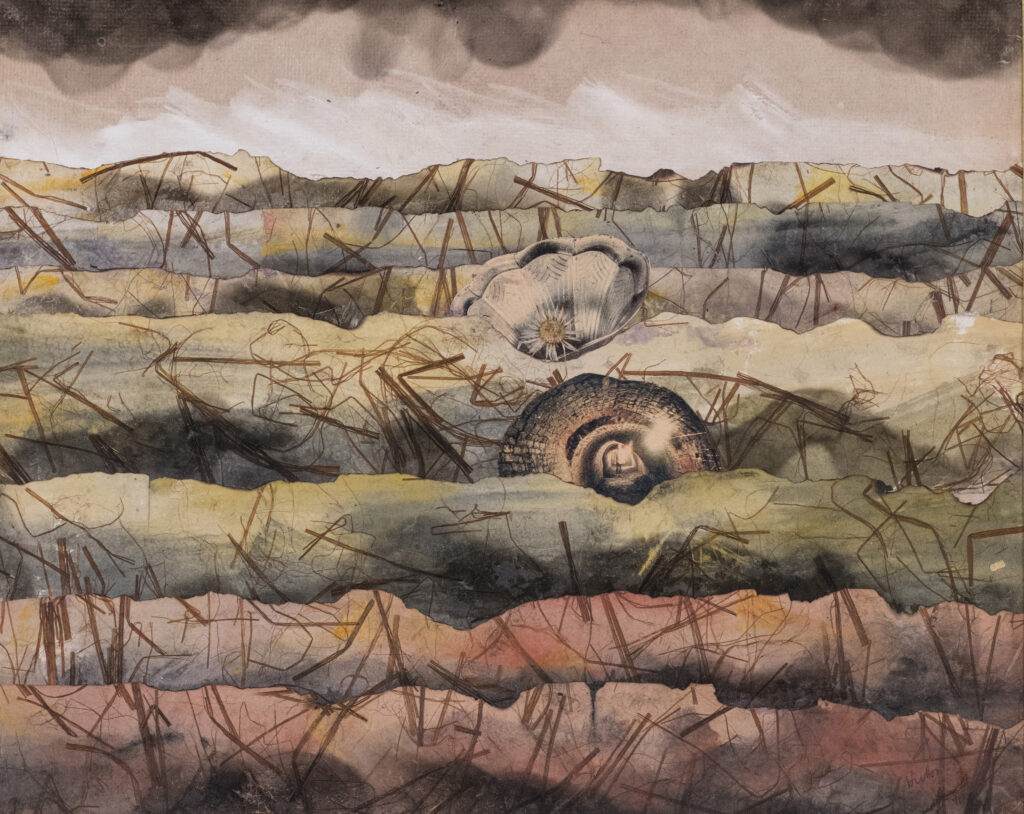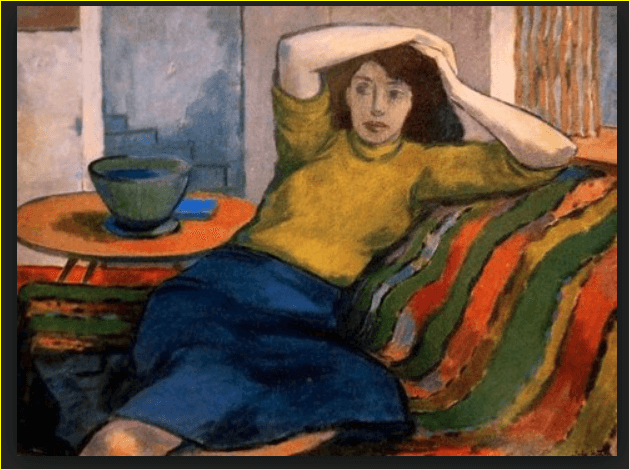Your currently viewing RAW Modern | Switch to RAW Contemporary
Surreal Landscape, Circa 1960
Catalogue essay by Blanche Llewellyn
Throughout her life, Blair made distinctive modernist works, using a variety of techniques including painting with a palette knife and experiments with collage. Many of her paintings relate to classical or biblical subjects and her landscapes frequently recall the backdrops of the figure paintings of Old Masters.
Later in her life, primarily during the 1960s, she transitioned from figurative to non-figurative art, embracing a surrealist aesthetic especially through the use of collages in which she explored the power of chance juxtapositions. Her works were frequently shown in exhibitions in Cambridge where she spent the later years of her life. Her early works are signed Helen Blair – and her later works are signed Nell Huton.
This composition, dating to around the 1960s revolution in colour printing, which transformed newspapers with the advent of the colour supplement, offered artists like Blair a vast reservoir of new visual material to plunder. In addition to the cut outs from magazines, Blair uses a real daisy and real grass, and various different textures of paper to create a seamless composition. The subtle juxtaposes of unexpected elements (a bricked catacomb, a figure, a real flower), a beloved technique of the Surrealists, creates a sense of disquiet. The landscape, divided into horizontal trench like strips that, along with the vertical posts of grass, bring to mind the battlefields of WW1, scared by human conflict, and yet, the real flower, resonating from its protective corona, offers a sense of hope and light. The predominantly earthy tones used by Blair create an overall a soft harmony.

